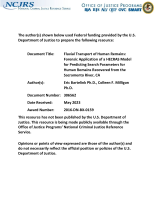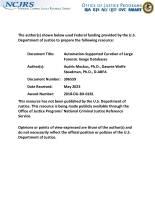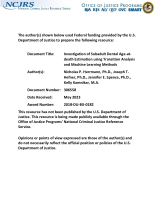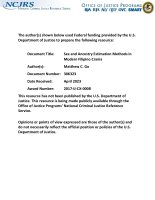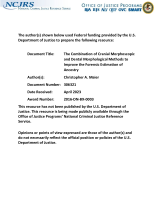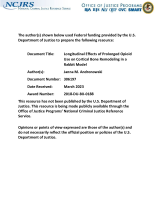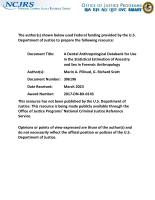Forensic anthropology
Automation-Supported Curation of Large Forensic Image Databases
Investigation of Subadult Dental Age-at-death Estimation using Transition Analysis and Machine Learning Methods
Sex and Ancestry Estimation Methods in Modern Filipino Crania
The Combination of Cranial Morphoscopic and Dental Morphological Methods to Improve the Forensic Estimation of Ancestry
Longitudinal Effects of Prolonged Opioid Use on Cortical Bone Remodeling in a Rabbit Model
A Dental Anthropological Databank for Use in the Statistical Estimation of Ancestry and Sex in Forensic Anthropology
NSF co-funded project - Sex Estimation in Forensic Anthropology: Taking a Legally-lnformed Approach to Method Development
Subadult sex estimation and KidStats
An analytical workflow for clustering forensic images
Dental Morphology: The Informative but Lesser-Known Traits
NIJ Awards Over $11 Million to Support Forensic Science Research and Development in 2022
On September 30, 2022, NIJ announced $11.6 million in funding to support 23 projects under the “NIJ FY22 Research and Development in Forensic Science for Criminal Justice Purposes” solicitation. Through its research and development grant funding, NIJ continues to advance the speed, accuracy, and reliability of forensic analysis, which ultimately bolsters the...


